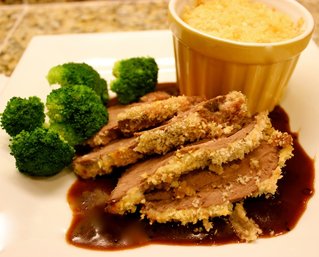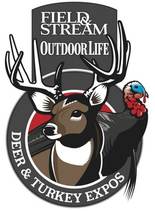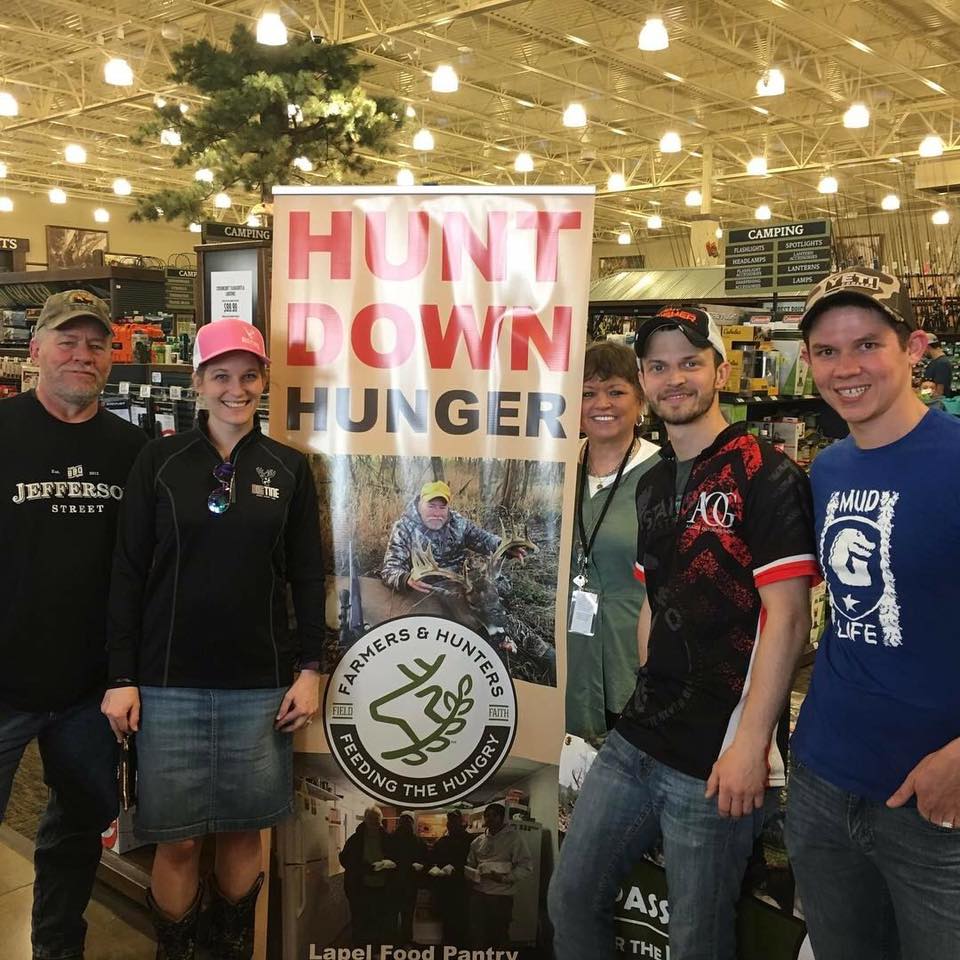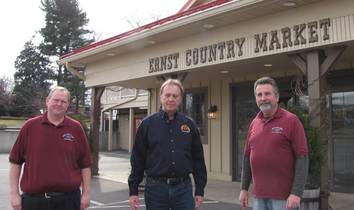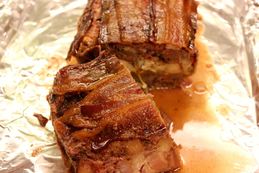News & Updates
FHFH Is Helping Those in Need
Apr 28, 2017 | News
To Whom It May Concern:
Farmers and Hunters Feeding the Hungry reached out to us in 2016 and has been a significant partner for our protein supply in 2016. As the Executive Chef, I am grateful for the partnership and steady supply of high-quality proteins to our guests.
Miriam’s Kitchen is committed to ending chronic homelessness in DC by creating meaningful connections with chronically homeless individuals, placing them in permanent supportive housing, and ensuring they have the necessary support to remain in housing. We advocate for permanent supportive housing as a long-term solution, while meeting short-term needs by providing healthy meals and high quality social services to more than 2,500 chronically homeless individuals each week.
We use about two hundred pounds of meat a week at our operation, all of which comes from donations. If we could continue to have a consistent supply of venison to help offset this large need, it would benefit our guests and the organization greatly. The chef team at Miriam’s Kitchen would be happy to continue to use any and all venison donations we could get from FHFH. The work they are doing not only benefits those who are most in need of the dignity of a restaurant-quality meal, but also betters the environment and DC community at large.
With gratitude,
Cheryl R. Bell
Executive Chef
Miriam’s Kitchen
Venison Top Sirloin Recipe
Apr 22, 2017 | News
By Bobbie Jo Wasilko
He Hunts She Cooks
A roasted venison top sirloin (aka “football roast”) is topped with a horseradish panko crust and served with an easy black currant sauce. The sweetness from the sauce is a great foil for the bite of horseradish. Add a side of homemade creamy cheesy caraway seed spaetzle and Sunday dinner just reached a whole new level!
Ingredients
For the Venison
- 1-two pound aged Venison Top Sirloin (aka “football roast”)
- 1 tbs. Fresh Cracked Pepper
- 1 tbs. Kosher Salt
- 1 tsp. Juniper Berries (crushed)
- 1 tsp. Caraway Seed
- 6 tbs. Prepared Horseradish (you can serve extra horseradish mixed with a little mayonnaise along side the roasted meat, if desired)
- 1/3-1/2 cup Panko (Japenese Breadcrumbs)
- 1/4 cup Grape Seed Oil ( or canola oil, or olive oil) plus a few tablespoons for searing
For the Black Currant Sauce
- 1 cup Venison Stock (or veal stock, I use More Than Gourmet brand)
- 1 cup Cabernet Sauvignon Red Wine
- 1 Shallot, minced
- 3 tbs. Black Currant Preserves
- 1/2 tsp. Fresh Ground Black Pepper
- 1 tbs. Butter
For the Caraway Seed Spaetzle
- 1-1/2 cups AP Flour
- 3 Eggs
- 1 tsp. Kosher Salt
- 2 tbs. Caraway Seed
For the Gratin
- 1/2 cup Heavy Cream
- 1/2 cup Gruyere Cheese (or Emmantaler, or other Swiss cheese)
- 1 Beaten Egg
- 1/2 cup Panko (Japanese bread crumbs)
- 2 tbs. Butter, melted
For the Venison
- 24 hours ahead, trim venison of all silver skin and coat with pepper, salt, crushed juniper berries, and caraway seed and place in a zip lock bag.
- Pour 1/4 cup oil into the bag.
- Refrigerate overnight.
To Cook the Venison
- Remove the venison from the fridge 1 hour before serving to bring to room temperature.
- Preheat the oven to 350 degrees.
- Heat a cast iron (or oven safe pan) over medium-high heat and add 3 tablespoons oil.
- Quickly sear the venison on all sides.
- Turn off the heat, and smear the horseradish over top and sides of the venison.
- Top the horseradish with panko and place, uncovered, into the oven.
- Roast the venison to no more than medium-rare, about 10 minutes.
- Serve with black currant sauce.
**For the Black Currant Sauce
- Heat 2 tbs. oil in a sauce pot over medium-high heat.
- Add minced shallot and sauté for 2 minutes.
- Add the stock and red wine, black pepper and simmer until reduced by 2/3, about 45 minutes.
- *This can be done the day ahead and refrigerated.
- Just before serving, add the black currant preserves to the reduced stock.
- Add 1 tbs. butter to give the sauce some shine.
- Serve with venison.
For the Caraway Seed Spaetzle
- *They can be made the day ahead and assembled and then refrigerated and brought to room temp. before baking.
- Mix flour, eggs, salt and caraway seed and set aside for half hour (this is to create a thick batter).
- Bring a large pot of water to a boil, and add 1 tbs. Kosher salt.
- Using a spaetzle maker, add the dough, about 1/2 cup at a time and press down on the plunger over the pot of water to create the noodles.
- Once the spaetzle noodles rise to the top (about 30 seconds), remove them to a bowl with a slotted spoon.
- Continue adding batter to the pot until all the spaetzle are cooked.
For the Gratin
- Once all the Spaetzle noodles are cooked, butter the inside of 4-6 ounce ramekins.
- Grate the gruyere cheese add the beaten egg and heavy cream into a bowl and mix.
- Add the cooked spaetzle and divide between the 4 ramekins.
- Melt the butter and mix with the panko then top the ramekins with the crumbs.
- Bake in a 300 degree oven for approximately 15-20 minutes or until golden brown on top.
Notes
- Spaetzle makers are quite inexpensive and cost from $6 up. A “ricer” makes a great spaetzle maker also. A colander with large holes can be used as a substitute, but you will need a helper to hold colander over the boiling water while you add the batter and scrape across the colander to push the batter through the holes, to create the noodle shapes.
- You can substitute making the homemade spaetzle for a bag of pre-made spaetzle, or extra wide egg noodles, or macaroni and just boil them and then add the caraway seed to the cheese gratin.
- The spaetzle can be boiled and cooled then assembled into the ramekins the day ahead, and refrigerated, then bring to room temp before baking. If refrigerating, bake a bit longer since they’ll be cold to start.
- Sautéed cabbage makes a great side dish (I was out of cabbage at the time, or I would have used it.)
- **The Black Currant Sauce: Can be made the day ahead, and reheated over low heat for serving.
FHFH Welcomes New Chapter Coordinator in Maryland
Apr 21, 2017 | News
You can find Amy and the rest of our local Chapter Coordinators by CLICKING HERE. We encourage you to reach out and support them!
Integrity Outdoors Partners With FHFH
Apr 21, 2017 | News
April 20, 2017
Integrity Payment Systems is proud to announce Integrity Outdoors. Inspired by the passion of CEO & President, Mike Ponder, Integrity Outdoors serves merchants in the hunting and fishing industry. Integrity Outdoors provides cutting edge payment processing solutions, exceptional customer service, and a dedication to serving the outdoors community, including a commitment to Farmers and Hunters Feeding the Hungry.
As part of Integrity Outdoors, merchants in the hunting and fishing industries can support the causes near to their hearts without spending a penny of their own money. When a business owner signs up for Integrity Outdoors, Integrity will match current processing fees and donate a large portion of Integrity’s own net revenue from each participating merchant transactions to Farmers and Hunters Feeding the Hungry. FHFH is a 501(c)3 nonprofit that provides nutritious meat to families and individuals in need and ministries that help those in need by paying local butcher shops to process deer and livestock that are donated by farmers and hunters.
“Farmers and Hunters Feeding the Hungry is an organization that we proudly support through Integrity Outdoors,” said Mike Ponder, President & CEO of Integrity. “It is of the utmost importance to me as an avid and passionate outdoorsman to use our business to build back into the communities we serve while supporting the businesses that serve the outdoors industry. This is a win-win-win for all involved.”
Additionally, Integrity Outdoors will promote participating merchants online at no cost to encourage community members and local customers to shop with them.
Updates, information about participating businesses, and information on industry trends are available by following Integrity Outdoors on social media: Facebook, Twitter, and Instagram.
About Farmers and Hunters Feeding the Hungry (FHFH)
Farmers and Hunters Feeding the Hungry (FHFH) is committed to addressing America’s hunger problem in a unique and relevant way. Established in 1997, FHFH enables hunters and farmers in states nationwide to provide nutritious meat to feed the hungry of their communities by working with meat processors, local food banks and feeding ministries to share their bounty.
About Integrity
Integrity is a full service payment solutions provider with merchant customers in all 50 states leveraging a suite of products and services including EMV technologies, terminals, POS integrations, and secure payment gateways. Integrity is headquartered in Des Plaines, IL. Mike Ponder, CEO & President, is an avid hunter and outdoorsman. He is a lifetime member of the National Rifle Association and a member of the Safari Club International, the National Wild Turkey Federation, Sportsmen’s Alliance, the Rocky Mountain Elk Foundation, Ducks Unlimited, and Delta Waterfowl. Learn more at integritypays.com.
If you are interested in signing up to participate in Integrity Outdoors, visit http://www.integritypays.com/outdoors or contact us at 866-988-4882.
FHFH at Deer and Turkey Expo in Ohio
Apr 20, 2017 | News
FHFH Coordinators set up a booth to display shirts and hats, and raffled off muzzle loaders and trail cameras.
The expo was a weekend full of fun for everyone who loves hunting, fishing and the great outdoors!
Central Indiana FHFH at Cabela’s Spring Event
Apr 15, 2017 | News
Community Foundation of Washington County, Inc. Partners With FHFH
Mar 18, 2017 | News
The FHFH Youth Hunter Initiative will encourage young hunters in the 12-24 year age range to provide a service to the less fortunate of the community by participating as deer donors to supply much needed meat to the programs in the Washington County community that assist in poverty (hunger) relief with youth and families. Providing this opportunity to serve others will help our youth become good citizens who contribute to the well-being of others in their community.
On behalf of those in Washington County who struggle with hunger, we thank the Community Foundation of Washington County MD, Inc. for their generosity and support of our mission to end hunger.
FHFH Gives Thanks for Our Participating Meat Processors
Mar 17, 2017 | News
Rick Wilson, Founder of FHFH, recounts how these two meat processors began partnering with FHFH 20 years ago to help feed the hungry.
“Chance Meeting With Greg Ernst”
The day after I had stopped to help a lady load a road kill deer into the trunk of her car to feed her hungry family, my wife and I stopped for lunch after church. I encountered my friend Greg Ernst who had butchered many of my family’s deer. After telling him what had happened the day before, I asked Greg if he would consider butchering deer donated by hunters in the area if I could raise the processing fees. He not only said yes enthusiastically, but he also said he would process them for his actual cost.
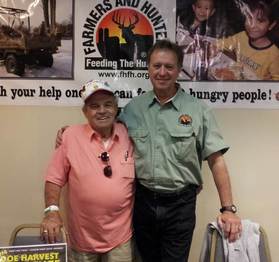
The next day, on the way home from teaching, I stopped at Holsinger’s Meat Market to speak with the owner, Bob Holsinger, who had also butchered many of our family’s deer. After asking Bob the same question I asked Greg Ernst he replied, “Do you think I would charge my retail butchering cost to feed the Lord’s deer to His hungry children? I’m not going to stand before Jesus one day and try to explain why I did that.” The eight to ten other customers in his shop chuckled as I slowly headed to the door with a sheepish grin on my face.
We give thanks to all of our participating meat processors for partnering with FHFH to help feed the hungry, and special thanks to Ernst Market and Holsinger’s Meat Market for partnering with FHFH for the past 20 years!
FHFH 2nd Online Auction a Success!
Mar 10, 2017 | News
A special thanks to our sponsors: Quality Deer Management Association, Redneck Blinds, Hunter Safety System, Twigg Cycles, Henry Repeating Arms, Buck Knives and G5 Outdoors for donating or discounting merchandise for the auction.
Jalapeno Cheese Stuffed Bacon Wrapped BBQ Glazed Smoked Antelope Meatloaf
Mar 4, 2017 | News
By Bobbie Jo Wasilko
He Hunts She Cooks
Ingredients- 3 lb Ground Antelope (substitute any ground meat you like)
- 2 lbs. Bacon
- 2-3 Jalapeños, de-seeded and minced finely
- 3 Eggs, lightly beaten
- 5 Slices Sandwich Bread, torn into small pieces
- 1 medium onion, small diced
- 2 Tbs. Onion Powder
- 2 Tbs. Garlic Powder
- 1-8 ounce pkg. Shredded 4 Cheese Mexican
- 1 cup Prepared BBQ Sauce, *divided in 1/2 cup portions
- Kosher Salt
- Pepper
Instructions
- In a large mixing bowl, add the ground venison, minced jalapeño, beaten eggs, torn bread pieces, diced onion, onion powder, and garlic powder.
- Mix until combined.
- Line a bread pan with saran wrap and divide the meatloaf in half.
- Place one half of the meatloaf in the bottom of the pan, press down lightly.
- Pour 1/2 cup BBQ sauce over top.
- Add the shredded cheese.
- Add the remaining half of the meatloaf and press down lightly, and set aside.
Make a basket weave out of the bacon
- From one and a half (about 16 slices) package of bacon, lay the bacon slices, horizontally close together on a large sheet of heavy duty aluminum foil.
- From the other one and a half packages, take one piece of bacon, and weave it vertically, going over one slice and under the next piece of bacon to create a basket weave, stretching the bacon to reach the end of the slices of bacon.
- Continue until all the bacon creates a whole weave.
- Remove the meatloaf from the loaf pan by carefully turning it over and removing the saran wrap.
- Lay the meatloaf, top side down in the center of the bacon weave.
- Fold the bacon over the meatloaf, using a few toothpicks to secure it together.
- Carefully turn the whole meatloaf over and fold the foil up around it, but do not cover it (this is just to keep the drippings in the foil.
- Pre-heat the smoker, and add mesquite wood chips, to get some smoke developing.
- Place a drip pan under the grate and lay the foil and meatloaf directly on the smoke grate.
- Smoke for 45 minutes.
- After 45 minutes, baste the meatloaf with remaining BBQ sauce. and continue to smoke another 15 minutes.
- Remove and serve.
 staff@fhfh.org
staff@fhfh.org  301-739-3000
301-739-3000 

